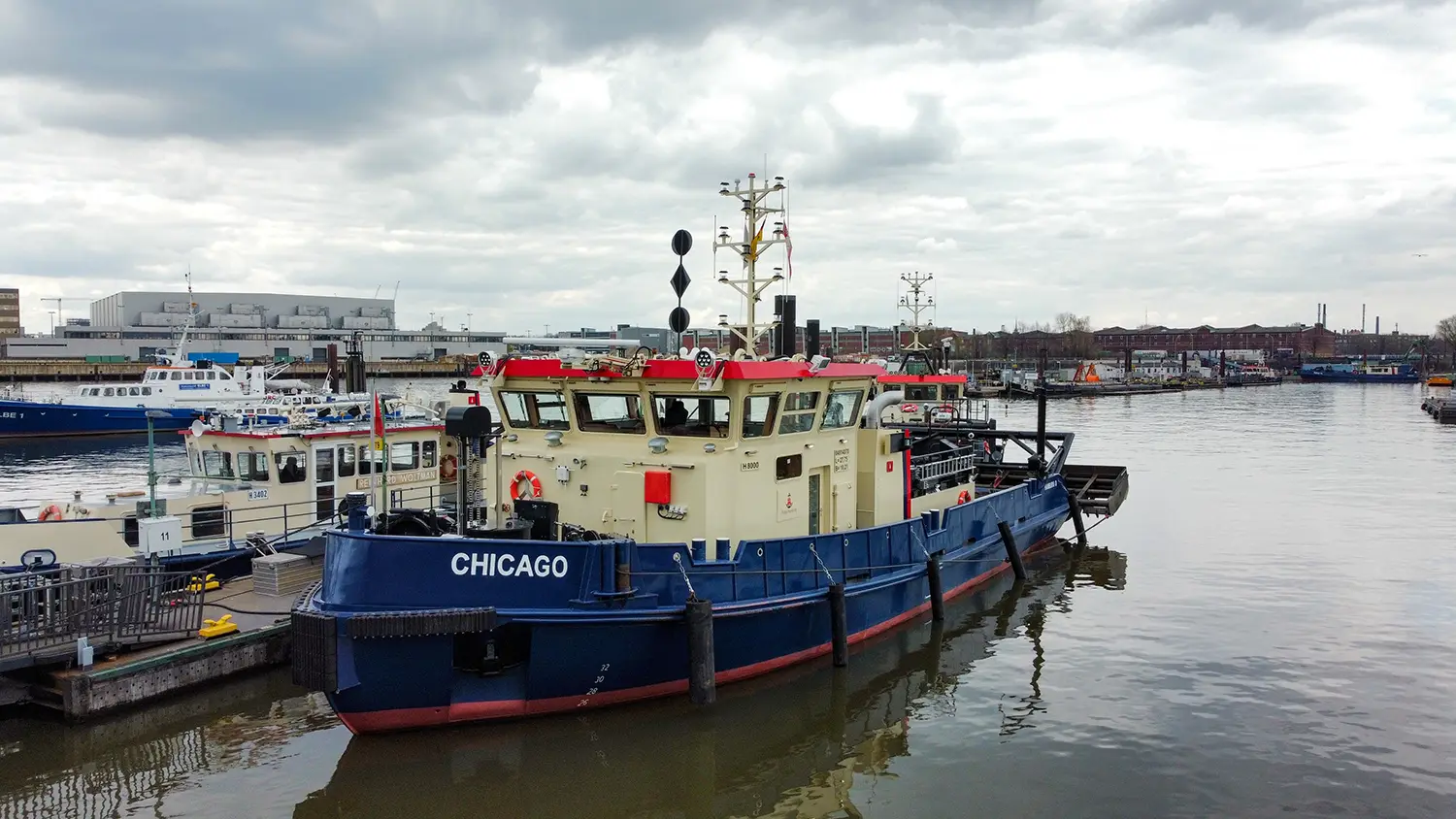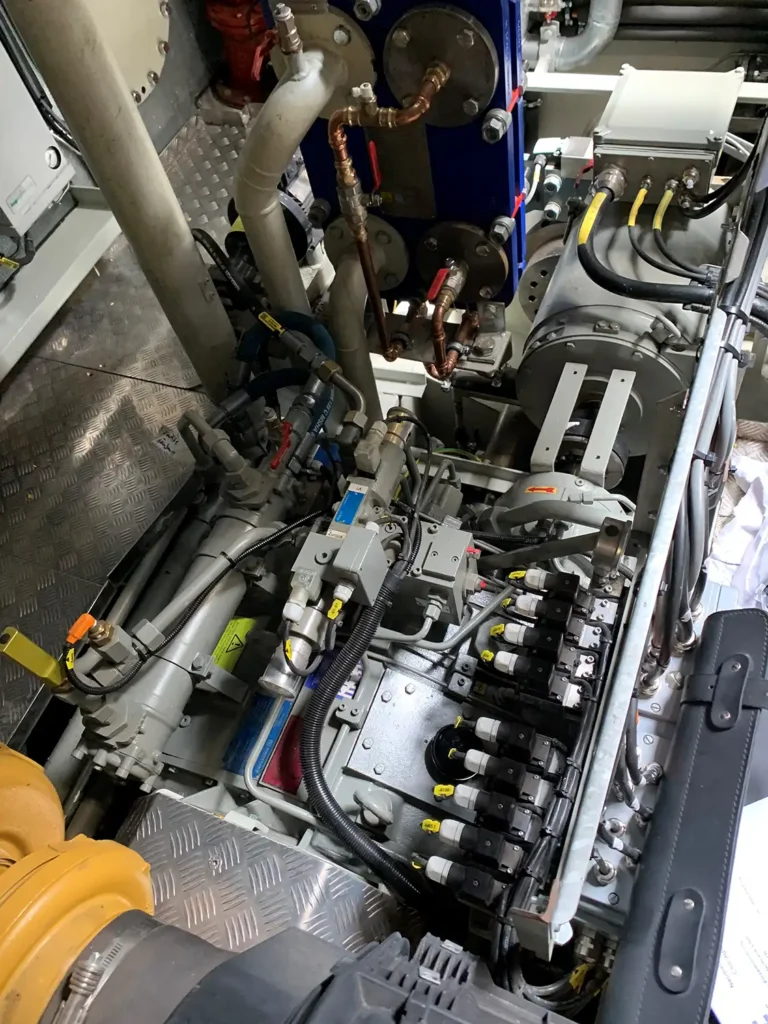
With the energy transition in full swing, drive solutions offering greater sustainability are also in demand in the shipping industry. The Chicago, a dredger working at the port of Hamburg, now sports a hybrid powertrain featuring two electric motors from BEN Buchele.
In many harbour zones and sensitive coastal regions in particular, more and more emphasis is being placed on low-emission and low-noise propulsion. Hybrid solutions consisting of conventional diesel engines and modern electric motors deliver a powerful drive with a high level of efficiency, as well as lower environmental impact and noise pollution. The Chicago project, in cooperation with the transmission specialist Reintjes, shows what is important when designing an electric motor for hybrid applications like this.
The Chicago, a dredger that shifts sediment in certain areas of the port so that it can be extracted better by the suction dredgers, is a twin-engine vessel. It has two prop shafts, each with a diesel engine as its main source of power and an electric motor for low-emission partial operation. Electric drive is used to move the ship through the port to where it needs to be without creating excessive noise pollution and emissions. Once in place, the dredger is switched back to its main engine and can get to work. Even when the ship is in electric mode, both propellers are still available, ensuring full manoeuvrability. The redundancy built into the system, which allows a single prop shaft to be used if one of the propellers fails, makes it possible.
Reintjes GmbH, which has extensive experience in the manufacture of maritime powertrains, is responsible for the overall hybrid system. When it comes to hybrid solutions, switching smoothly between the different drive modes can be a challenge. One way to change from electric operation to diesel power is by using the control lever. Moving the lever by a small amount manoeuvres the ship using electric power. Once the lever reaches a set position, the diesel engine kicks in. A simple button is another method of switching between modes – and was the solution implemented for the Chicago. If the lever is in neutral, the captain can select electric mode by pressing the button and continue to steer the ship using the control lever. Drive modes can be changed at any time, even when the ship is in motion and the propeller is turning.
Water-cooled electric motor with high rated output

Our water-cooled electric motors are used in the hybrid powertrain from Reintjes (seen here on the right). Their compact size and low heat dissipation are perfectly suited to the crowded engine room.
When it comes to design and engineering, our aim is always to deliver the required speed as precisely as possible by minimising losses and striving for higher efficiency levels in order to achieve greater motor efficiency (IE2 or IE3). As a rule, we design the motor to be slightly more powerful so that it can easily reach the required speed in real life. The use of higher quality sheet metal for the stator and rotor kits enables us to reduce losses and increase efficiency.
In order to cover the different operating modes between diesel and electric operation, the electric motors had to allow high speeds and be able to call up the rated power over a wide speed map. Around double the rated speed was required for this project. As a result, the motors had to run at up to 4,300 rpm in generator mode while also supplying the 60 kW of power at as low as 2,000 rpm so that they could operate at full capacity at the required speed of 6 kt in electric mode. This kind of engine map is something we can guarantee.
Water cooling for lower heat dissipation
The motor’s water cooling is another benefit to the heat concept in the engine room. All of the power electronic components, from the batteries to the variable frequency drive, generate a certain amount of heat. Water-cooling the electric motors, however, eliminates all further sources of heat in the engine room. Other major advantages of a water-cooled motor are its low weight and compact size, meaning it can be installed without taking up too much space. Water-cooled motors output the same amount of power as a surface-cooled engine at a much larger frame size.
The Chicago has been dredging the harbour since October 2022 – reliably and with little maintenance. Our electric auxiliary drives are robust and durable. As asynchronous motors, they are also a safety factor for the hybrid system. Even when the electric motors are not live – in other words, when the ship is running on diesel power – they run in parallel and therefore don’t risk causing any short circuits.